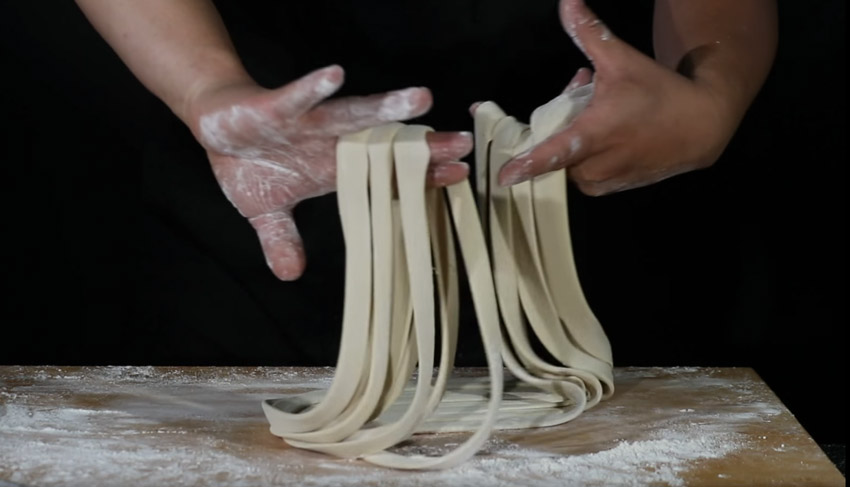Gansu is a province in Western China that runs alongside the Yellow River. Its claim to fame is beef noodle soup, which many Chinese citizens and visitors feel is the best in the entire country. According to local legend, it’s the hand-pulled noodles in otherwise ordinary beef noodle soup that makes it so delicious and memorable.
However, it’s not just any chef who can create the perfect hand-pulled noodles. It requires weeks or even months of training doing nothing but making and pulling noodles all day long. Knowing that should help diners appreciate the history of this special dish even more.

How Hand-Pulled Noodles Came to Be
Although most Americans are familiar with Japanese ramen noodles, fewer know about Lanzhou ramen, the Chinese name for hand-pulled noodles. The dish originated centuries ago in Gansu, and the preparation of the noodles has not changed since the earliest days. The first step is for the chef to stew Halal beef in clear broth. The stewing process helps to draw out the robust flavor of the meat while also ensuring that the noodles remain springy, fresh, and flavorful.
Lanzhou noodles have received the designation of an officially registered commercial designation trademark in China. Because of this, chefs must prepare them according to several specific rules. These include:
- The noodles must have identical thickness and width and measure in certain diameters.
- When using white radish noodles, chefs must ensure measurements of 4 x 2.5 x 0.2 centimeters.
- The beef for the beef noodle soup must soak in hot water for several hours. As the meat cooks, the chef needs to add beef blood to the broth. Besides the beef, chefs must also add a whole chicken, lamb liver, and beef bones to the broth as it cooks.
What Students Should Expect from Noodle-Pulling Classes
The art of making hand-pulled noodles is so precise that would-be chefs must complete an official noodle school class before they can hope to work in restaurants. Noodle master Zhaohong Li, for example, started a noodle class in 2011 that meets seven days a week and three times a day. Students can choose to complete a 15-day, 30-day, or 40-day program that includes housing and food. Although most students are nationals of China, people from other countries are slowly making their way to China for the opportunity to learn from Zhaohong Li.
How Hand-Pulled Noodles Become So Elastic
A local desert plant known as penghuicao in China and halogeton in English-speaking countries is the secret ingredient that gives the noodles in beef noodle soup the elasticity necessary to stretch them out so far. Chefs add small quantities of the plant to the water and flour when preparing the dough that makes the noodles. In noodle classes, students pull, knead, and string the dough through their fingers in a rhythmic fashion until they start seeing long and uniform-looking noodles appear between their hands.
It can take dozens of tries for student chefs to get this right, which can be frustrating. Fortunately, that frustration turns to adulation from restaurant patrons who get to benefit from the hours of hard work these chefs undertook to get the hand-pulled noodles included in beef noodle soup just right.
To read more on topics like this, check out the blog category.



